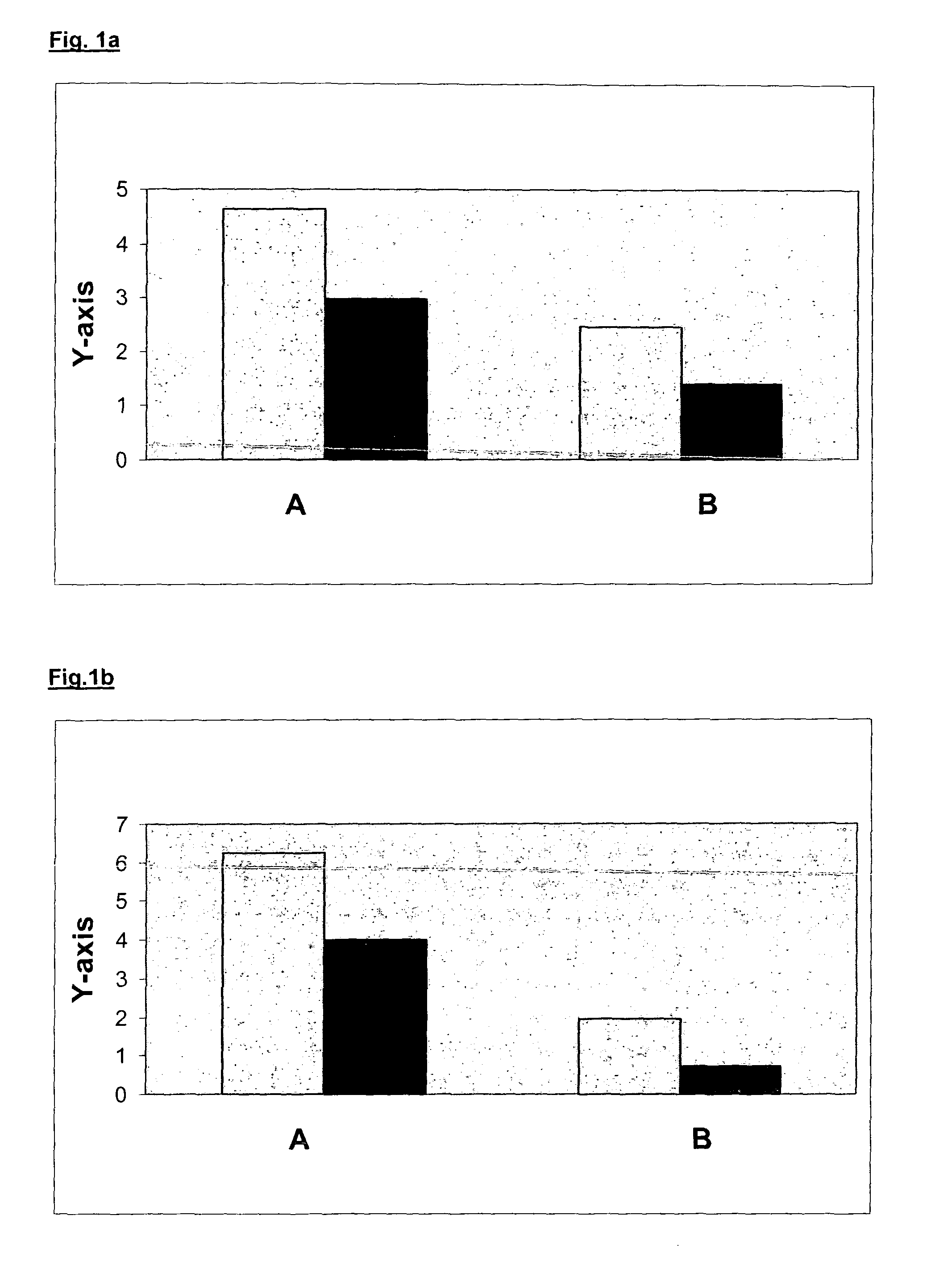Method of Determination of Receptor Binding Saturation Effected by Monoclonal Antibodies
a monoclonal antibody and receptor binding technology, applied in the field of receptor binding saturation determination by monoclonal antibodies, can solve the problems of inability to measure the grade of saturation, inability to obtain a biopsie of the target tissue, and inability to use labeled antibodies under therapy, so as to avoid underdosing or overdosing
- Summary
- Abstract
- Description
- Claims
- Application Information
AI Technical Summary
Benefits of technology
Problems solved by technology
Method used
Image
Examples
example 1
[0115]In a Phase I study saturation of EGFR effected by intravenous administered antibody EMD 72000 was investigated.
[0116]Therefore, an immune histochemical assay with two several antibodies was employed. Murine antibody E 62 (manufactured and provided by Merck KGaA, Darmstadt) binds to an epitope of the extracellular domain of the EGFR which is different from the binding site of natural ligands and the specific antibody EMD72000. The staining with E 62 displays the whole content of EGF receptor per cell / tissue sample. Biotinylated antibody EMD 72000 (manufactured and provided by Merck KGaA, Darmstadt) is a variant of the therapeutic EMD 72000 sharing the same binding site at the extracellular domain of the EGF receptor with the natural ligands (e.g. EGF and TGFalpha).
[0117]EGF receptor blockade or even receptor binding saturation achieved by in vivo or in vitro administration of EMD 72000 should reduce or eliminate the staining effected by the biotinylated EMD 72000 antibody in co...
PUM
| Property | Measurement | Unit |
|---|---|---|
| time | aaaaa | aaaaa |
| time | aaaaa | aaaaa |
| signal strength | aaaaa | aaaaa |
Abstract
Description
Claims
Application Information
 Login to view more
Login to view more - R&D Engineer
- R&D Manager
- IP Professional
- Industry Leading Data Capabilities
- Powerful AI technology
- Patent DNA Extraction
Browse by: Latest US Patents, China's latest patents, Technical Efficacy Thesaurus, Application Domain, Technology Topic.
© 2024 PatSnap. All rights reserved.Legal|Privacy policy|Modern Slavery Act Transparency Statement|Sitemap

